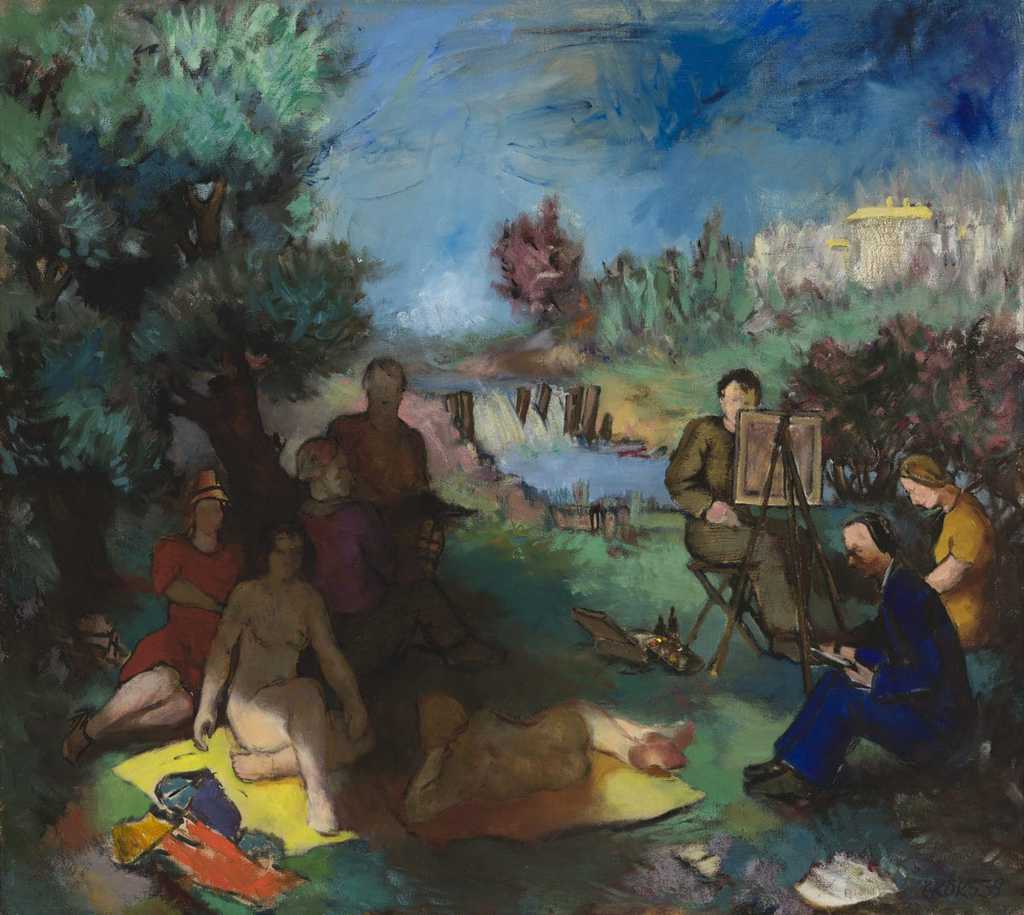
Endel Kõks’s painting marks a breakthrough of a kind in Estonian nature painting – naturally not a momentary, all-encompassing one. Until then, artists had often depicted nature by going into it. Nature was a familiar environment for artists, where they knew every corner and were able to paint those corners in a way that was associated with discovery. There was no distance separating them, the curtain of civilisation had not yet fallen between the landscape and mankind, people had not yet been taught to see nature as something that stands outside of themselves, distant, somewhere ‘there’. This kind of approach continued in later painting as well, primarily in works by artists who were born and started painting before the Second World War: Elmar Kits, Richard Uutmaa, Richard Sagrits and others had grown together with nature to such an extent that landscapes, brushwood and tufts of grass are seen in their paintings not as being exotic, but rather as being homelike. They do not applaud, rather they witness. They do not polish nature up to make it shine, rather they quietly admire its modesty and repletion. These artists were fishermen and hikers in their private lives as well, or they simply were glad to wander about in nature. Yet this does not apply to Endel Kõks. Pastoral genres were not among his hobbies and a much more urban attitude towards nature can also be seen in his paintings from the very start.
Maalijad [Painters] admittedly demonstrates a scene to us where people are in the midst of nature, but from their clothing and activity it can be discerned that they feel like strangers there. People previously found their way into works by Estonian artists mostly when they were working there – here, however, people are engaged in recreational pursuits. These people are relaxing, unwinding, and have come to a clump of trees to admire the beauty of nature, thereby situating themselves at a distance from nature: nature is something that can be looked at from the side like one looks at a painting hanging on the wall or at a sleeping child. The people wear suit jackets, high-heeled shoes and wide-brimmed hats, or if they are nude, then sheets are spread out on the ground first before flopping down on them. Nature is looked at and it is painted, but the people do not blend in with it. The people also stand out from the surrounding greenery strikingly vigorously in terms of colour tones as well: dark blue, yellow and red clothing separate people from the landscape. They are no longer a part of it. The curtain of civilisation has fallen, and far in the distance in the upper right hand corner, the contours of the city glimmer through the greenery, indicating to the viewer that they have not gone to a wild forest somewhere, but rather to the woods right there near the city only a short walk away. Kõks, who always uses a very bold palette but has a very sensitive sense of colour, has not held himself back in terms of the colouring. A new kind of modern age glimmers through all of this – people do not disappear, they do not blend in, rather there is the wholistic and harmonious world of nature, and then there is the world of mankind that is just as wholistic and blends into one. And they no longer exist together, but rather side by side.